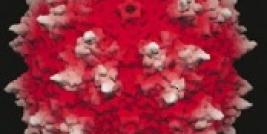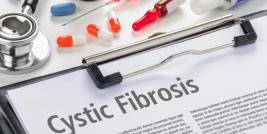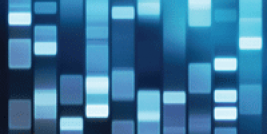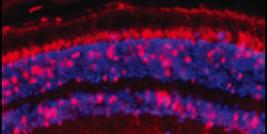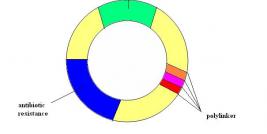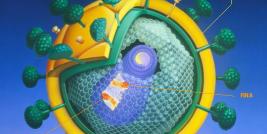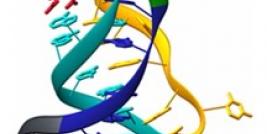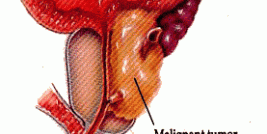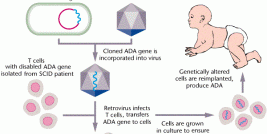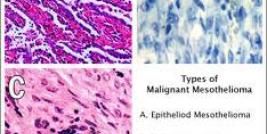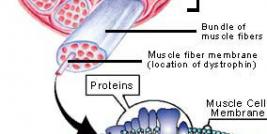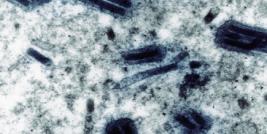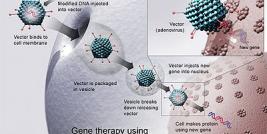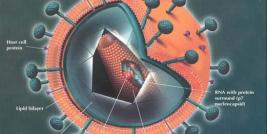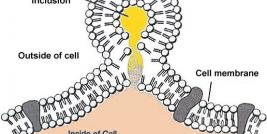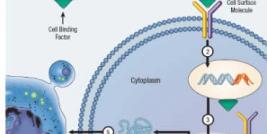Introduction
Takehide Murataa,*, Jianzhi Pana (c), Megumi Hirosea, Kumiko Inabea, Yukari Kujimea, Chitose Kuriharaa, Yuka Kusaa, Satoko Masuzakia, Koji Nakadea, Yuri Nakanoa, Masato Ohkuboa, Takahito Yamasakia, Yuichi Obatab, Kazunari K. Yokoyamaa (d)
Gene Engineering Division, bRIKEN BioResource Center, 3-1-1 Koyadai, Tsukuba, Ibaraki 305-0074, Japan; (c) Institute of Veterinary and Animal Husbandry, Zhejiang Academy of Agriculture Seiences, 198 Shiqiao Road, Hangzhou, Zhejiang Profecture, China; (d) Center of Excellence for Environmental Medicine, Graduate Institute of Medicine, Kaohsiang Medical University, 807 Kaohsiang, Taiwan.
*Correspondence should be addressed to Takehide Murata, Gene Engineering Division, RIKEN BioResource Center, 3-1-1 Koyadai, Tsukuba, Ibaraki 305-0074, Japan (Tel: 81-29-836-3612; Fax: 81-298-9120; e-mail: murata_t@brc.riken.jp).
Introduction

The RIKEN DNA Bank [Gene Engineering Division of RIKEN BioResource Center (RIKEN BRC)] maintains a Recombinant Virus Bank (RVB; 1,2) as a stock center of recombinant viruses. The RVB supplies a large number of scientists working in molecular biology and human gene therapy. The RIKEN BRC is a nonprofit organization whose activities are supported by the Ministry of Education, Culture, Sports, Science and Technology (MEXT), Japan. Researchers can access the web site of the RIKEN DNA Bank to search for recombinant adenoviruses and obtain the RDB (RIKEN DNA Bank) number (catalog number) of the recombinant adenoviruses in which they are interested. To recombinant request viruses, they need to prepare request-documents and the indicated material transfer agreement (MTA). Moreover, researchers can access the site ‘How to obtain resources’. The RVB is a unique bank of readymade recombinant viruses that are now available on demand for the cost of shipping and handling only.
Vector series
Shuttle vectors for construction of recombinant adenoviruses (see Table 1) were constructed by Dr. Izumu Saito (The Institute of Medical Science, The University of Tokyo). All vectors can produce recombinant adenoviruses by the COS-TPC method, which is an efficient way to produce recombinant adenoviruses (3). These vectors are classified into two groups: first group is based on the cosmid vector that can produce recombinant adenoviruses by the intact-genome transfection method (IT method; 4) (Table 1, RDBs 3120, 3121, 5212–5215) and the second group is the vector to generate recombinant viruses by non-IT method. Using this technology, researchers can obtain recombinant adenoviruses by transfection of HEK293 cells with DNA of shuttle vectors linearized by digestion with an appropriate restriction enzyme. We have three different promoters: a modified chicken beta-actin promoter with a cytomegalovirus-immediate early enhancer (CA; RDBs 1678, 3121, 5213, 5214) (5), a carcinoembryonic antigen gene promoter (CEA; RDB 2565) and an elongation factor 1 alpha gene promoter (EF-1 alpha; RDB 5215). By contrast, promoterless shuttle vectors (RDBs 917, 3120, 5212) can be used for construction of custom expression vectors by insertion of the expression unit of interest. For example, a series of brain-specific vectors (RDBs 6009–6017) were deposited by Dr. Mitsuhiro Hashimoto, RIKEN Brain Science Institute.
Table 1. Shuttle vectors for construction of recombinant adenovirus (pAx and pAxit system vectors)
Name of
vector
Cloning site
Promotera
Cre-loxPb
Production of recombinant adenovirus
RDB no.
Intact-genome transfectionc
COS-TPCd
pAxcw
SwaI
Yes
917
pAxCAwt
SwaI
CA
Yes
1678
pAxcwit
SwaI
Yes
Yes
3120
pAxCAwtit
SwaI
CA
Yes
Yes
3121
pAxCEAwt
SwaI
CEA
Yes
2565
pAxcwit2
SwaI
Yese
Yes
5212
pAxCAwtit2
SwaI
CA
Yese
Yes
5213
pAxCALNLwtit2
SwaI
CA
Yes
Yese
Yes
5214
pAxEFwtit2
SwaI
EF-1 alpha
Yese
Yes
5215
a. CA, a modified chicken beta-actin promoter with a cytomegalovirus immediate early enhancer (CMV-IE); CEA, carcinoembryonic antigen; EF-1 alpha, elongation factor 1 alpha.
b. Target gene harbored in the recombinant adenovirus can be expressed by coinfection with AxCANCre (RDB no. 1748, Kanegae et al., Gene 181: 207–212, 1996).
c. Fukuda et al., Microbiol. Immunol. 50: 643-654, 2006.
d. Miyake et al., Proc. Natl. Acad. Sci. USA 93: 1320-1324, 1996.
e. PacI restriction enzyme is also applicable for linearization in addition to Csp45I.
Construction and collection of shuttle vectors and recombinant adenoviruses
By the end of 2008, the RIKEN DNA Bank had constructed and collected more than 500 recombinant adenoviruses and more than 700 shuttle vectors for recombinant adenovirus from the Japanese research community. We appreciate for the contribution of Dr. Hirofumi Hamada, Sapporo Medical University (www.sapmed.ac.jp/~hhamada/home-in-English.htm), who has deposited half of our resources. The shuttle vectors carry cDNA encoded a number of molecules involved in apoptosis, immunity, transcription factors, cell signaling and induction of pluripotent stem cells (iPS). These shuttle vectors and recombinant adenoviruses have been validated by restriction mapping or by nucleotide sequencing. Moreover, all recombinant adenoviruses were tested for contamination by replication-competent adenovirus (RCA) by assessing their ability to infect HeLa cells and by PCR using E1A and E1B specific primer sets (6). The RCA-negative recombinant adenoviruses were propagated in HEK293 cells and preserved for distribution to the research community.
Other tools
We have other sub-banks as described below. The Promoter Bank provides DNA fragments of promoters and encoded transcription factor response elements, such as tissue-specific, cancer-specific and p53 response sequences fused to several reporter genes such as luciferase, lacZ and Cre recombinase. Results of the assay of reporter activity in numerous cell types are available as described elsewhere (Promoter Bank). The pCMV-FLAG Collection provides a series of expression vectors of human full coding sequence (CDS) cDNA, the nucleotide sequences of which have been confirmed by sequencing, and the expression of the encoded proteins in mammalian cells by Western blotting. Furthermore, a large number of genomic and cDNA cloned libraries have also been deposited by genome projects and are available for distribution to the research community.
References
1. A database of recombinant viruses and recombinant viral vectors available from the RIKEN DNA bank. Ugai H, Murata T, Nagamura Y, Ugawa Y, Suzuki E, Nakata H, Kujime Y, Inamoto S, Hirose M, Inabe K, Terashima M, Yamasaki T, Liu B, Nakade K, Pan J, Kimura M, Saito I, Hamada H, Obata Y, Yokoyama KK. J. Gene Med. 2005; 7: 1148-1157.
2. Recombinant Virus Bank for gene delivery. Yokoyama KK, Murata T, Ugai H, Suzuki E, Terashima M, Kujime Y, Inamoto S, Hirose M, Inabe K, Yamasaki T. Science 2005; 307: 1722.
3. Efficient generation of recombinant adenoviruses using adenovirus DNA-terminal protein complex and a cosmid bearing the full-length virus genome. Miyake S, Makimura M, Kanegae Y, Harada S, Sato Y, Takamori K, Tokuda C, Saito I. Proc Natl Acad Sci U S A 1996; 93: 1320-1324.
4. Possible mechanism of adenovirus generation from a cloned viral genome tagged with nucleotides at its ends. Fukuda H, Terashima M, Koshikawa M, Kanegae Y, Saito I. Microbiol. Immunol. 2006; 50: 643-654.
5. Efficient selection for high-expression transfectants with a novel eukaryotic vector. Niwa H, Yamamura K, Miyazaki J. Gene 1991; 108: 193-199.
6. A simple method for the simultaneous detection of E1A and E1B in adenovirus stocks. Suzuki E, Murata T, Watanabe S, Kujime Y, Hirose M, Pan J, Yamasaki T, Ugai H, Yokoyama KK. Oncol Rep 2004; 11: 173-178.

